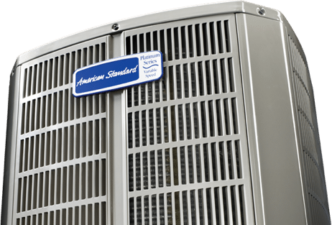Here in Texas, we might make multiple trips to adjust our thermostat in the same day. With daily temperature fluctuations of more than 30℉ in some seasons, we’re constantly managing the regulation of temperature in our homes. Without our handy thermostats, it would be much more difficult to keep our homes comfortable AND efficient.
Air Tech of Conroe knows that accurately managing your heating and cooling system starts with understanding all the components. Have you ever wondered how your thermostat controls your entire home’s air conditioning? It’s time to find out!
Non-Digital Thermostats
Although most thermostats on the market are now upgraded to digital, they used to be created without any digital components at all. In some older homes or buildings, you may still come across a non-digital thermostat.
Non-digital systems utilize a tiny glass tube with mercury inside. A coiled piece of metal expands and contracts according to the heat in the space, tilting the mercury left or right. When the mercury reaches one side or the other, it prompts an electrical signal to be sent through wires to turn on the heat/cooling or turn it off.
Digital Thermostats 101
Digital thermostats also rely on the basic principle of electrical signals, but they’re much more refined. These systems send electrical currents and measure the resistance of the current to calculate the temperature. If there is a variation between the preset temperature and the temperature calculated by the electrical current, the system knows that it needs to turn on the heating or cooling unit.
The Main Advantage Of Digital Thermostats
Other than being more accurate and modernized for use in our homes and buildings, digital thermostats offer one of the most revolutionary aspects of temperature control: programmable temperature. We don’t have to rely on a piece of coiled metal to move the temperature up and down — we don’t even have to be home to direct the temperature!
By using inner clocks and timers, digital thermostats can be scheduled to turn on the heat or cooling components of your HVAC system. If you have a regular schedule of leaving for work at 7 and coming home at 6, you can program the system to turn off at 7 and back on at 5:30 to prepare for your arrival. This allows for more precise heating and cooling as well as energy-saving habits in your home. Why pay to cool a home all day that no one is in? Yet, you can still be comfortable after a long day because your thermostat started cooling the space before you arrived.
Overstimulating Your Thermostat
It’s important to remember that the thermostat is simply the brain of your HVAC system. If you’re frustrated by the temperature in your home, check on your thermostat settings first. However, if your thermostat is set correctly, then the problem is rarely with its capabilities.
The thermostat can direct the HVAC system to run or turn off all day long, but it’s up to the heating and cooling unit itself to produce results. This is why it can be so damaging to put higher and higher demand on your thermostat. Your AC needs time to cool, transport and spread the air you want — the results are not immediate. Extreme or frequent changes in demand don’t give you system enough time to do it’s job.
Need Thermostat Installation?
If you’ve inherited an older non-digital thermostat system, it’s time to upgrade to digital. If your current digital thermostat is causing you problems, a replacement could make your life 10 times easier. Call on Air Tech of Conroe today to make your AC system precise and responsive again!










